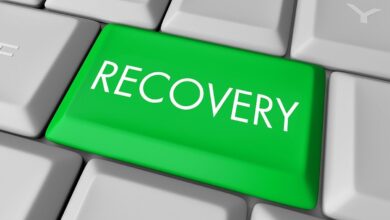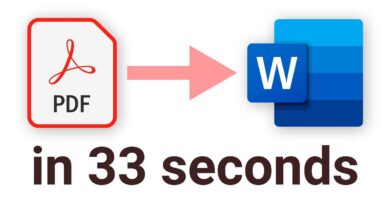Recovering a stolen Facebook account after losing your password, phone number, and email 2024
Recovering a stolen Facebook account after losing your password, phone number, and email 2024

Losing access to your Facebook account can be a distressing experience, especially if you’ve lost not only your password but also access to your email and phone number. However, even in such challenging circumstances, Facebook provides a structured recovery process to help you regain control of your account. This article will guide you through the steps to recover a stolen Facebook account in 2024, exploring various recovery options and addressing the challenges you might face along the way.
Key Takeaways
- Facebook’s account recovery process is designed to assist users even when they have lost access to their password, email, and phone number.
- The recovery procedure involves identifying your account, choosing a recovery method, and following Facebook’s instructions, which may include entering a verification code or answering security questions.
- Users can explore self-help options such as password reset features and Facebook’s Help Center or seek additional support from Facebook support, community forums, and professional recovery services.
- Challenges in account recovery include the high volume of user inquiries and the difficulty in reaching human support, highlighting the importance of setting up preventive measures like two-factor authentication.
- In cases where standard recovery information is unavailable, users may need to prove their identity to Facebook through alternative means to regain access to their accounts.
Understanding the Account Recovery Process

Identifying Your Account
When I first realized my Facebook account was stolen, I knew I had to start by identifying my account to Facebook. This is a crucial step because, without it, Facebook won’t know which account I’m trying to recover. I had to provide information that was associated with my account, like my full name or username. It’s a bit like telling a friend how to recognize you in a crowd by describing your jacket or hat.
To make sure I got it right, I double-checked the details I remembered. It’s easy to make a mistake when you’re stressed, and the last thing I wanted was to hit a dead end because of a typo.
Once I had my account pinpointed, Facebook presented me with several options to recover it. I had to choose the method that worked best for me, considering the information I still had access to.
Choosing a Recovery Method
Once I’ve confirmed it’s really my account that’s been compromised, it’s time to pick a recovery method. Choosing the right method is crucial, as it can make the difference between getting back into my account or hitting a dead end. Here’s what I consider:
- Identity verification: I’ll need to prove who I am to Facebook. This might involve uploading a photo ID or providing other forms of identification.
- Trusted contacts: If I’ve set them up before, I can reach out to friends who can help me regain access.
- Online recovery services: While there are legitimate services, I’m always on the lookout for scams. It’s essential to research and verify the credibility of any service I consider.
To recover a locked Facebook account without a phone number, visit the Facebook Help Center, provide proof of identity, follow instructions, and be patient and persistent in the process.
Each option has its own set of challenges, but I’m determined to get my account back. I’ll weigh the pros and cons and choose the path that seems most promising for my situation.
Following Facebook’s Instructions
Once I’ve identified my account and chosen a recovery method, the next step is to follow Facebook’s instructions to the letter. It’s crucial to adhere to their guidelines to ensure a smooth recovery process. Here’s what I typically do:
- Carefully read through the instructions provided by Facebook.
- Gather any necessary information or documents that may be required.
- Follow each step methodically, without skipping any part of the process.
Remember, patience is key. The recovery process may take some time, especially if there are many steps to follow or if additional verification is needed.
By staying organized and methodical, I increase my chances of successfully recovering a stolen Facebook account after losing my password, phone number, and email 2024. If at any point I’m unsure about the instructions, I don’t hesitate to look for additional information or ask for help from Facebook’s Help Center.
Initiating the Recovery Procedure

Navigating to the Facebook Login Page
Once I realized my Facebook account was stolen, I knew I had to act fast. The first thing I did was head over to the Facebook login page. It’s where everything starts. I found the ‘Forgot Password?’ option right there on the screen, which was my gateway to begin the recovery process.
Next, I had to make sure Facebook could identify me. I couldn’t use my email or phone number since those were compromised, but I remembered reading about alternative methods. So, I checked out a guide that mentioned accessing the menu on a web browser and finding my Facebook URL, which was a crucial step.
- Step 1: Visit the Facebook login page.
- Step 2: Click on ‘Forgot Password?’.
- Step 3: Identify your account using alternative information.
Remember, the key here is to act quickly and use every piece of information available to you that can help Facebook recognize you as the rightful account owner.
Utilizing Facebook’s Recovery Process Center
Once I realized my Facebook account was compromised, I knew I had to act fast. The Recovery Process Center was my next stop. Here, I found a streamlined approach to regaining control of my account. The process was intuitive and user-friendly, guiding me through each step.
- First, I was prompted to enter my account information to identify myself.
- Then, I selected the most suitable recovery method from the options provided.
- After that, I carefully followed the on-screen instructions, which often included entering a verification code sent to an alternative contact method.
It’s crucial to ensure that the information you provide is accurate and up-to-date to avoid any delays in the recovery process.
I also discovered that patience is key. The volume of inquiries Facebook handles means that responses may not be immediate, but persistence pays off. If you’re stuck, don’t hesitate to explore self-help options or reach out to Facebook’s Help Center for further guidance.
Receiving and Using the Verification Code
After I navigated through the recovery steps, I finally got to the point where I received the verification code. This code is like a secret key that proves it’s me, and it’s crucial for the next step. I checked my inbox and there it was, the code sent by Facebook. I entered this code on the recovery page, clicked on ‘Get Code and Verify My Identity‘, and just like that, I was one step closer to regaining control of my account.
Here’s what I did next:
- I was prompted to create a new password. I made sure it was strong and unique to prevent future security issues.
- I reviewed my account settings thoroughly to confirm no unauthorized changes were made.
It’s important to be vigilant during this process. Watch out for fake messages that try to trick you into giving away your information.
If you’re stuck because the code was sent to a phone number or email you no longer have, don’t worry. There are still ways to recover your account, which I’ll cover in the upcoming sections.
Account Recovery Options

Using Trusted Contacts
When I set up my Facebook account, I never thought I’d be in a situation where I’d lose access to my email, phone number, and password all at once. But here I am, and thankfully, I remembered that I had set up Trusted Contacts. Trusted Contacts are friends I chose on Facebook who can provide me with recovery codes to help me get back into my account. Here’s how I used them:
- I went to the Facebook login page and clicked on ‘Forgot account?’.
- I followed the prompts until I reached the option to ‘Use Trusted Contacts’.
- I entered the names of my Trusted Contacts and followed the instructions to send them a request for help.
Each of my Trusted Contacts received a code, which they then shared with me. I needed a certain number of codes to verify my identity and reset my password. It’s a straightforward process, but you need to have set up Trusted Contacts beforehand.
Remember, it’s crucial to choose people you trust deeply as Trusted Contacts. They’ll play a key role in your account recovery process, so make sure they’re reliable and easily reachable.
Answering Security Questions
If you’ve set up security questions for your Facebook account, they can be a lifeline when you’re trying to recover access. Remembering the answers to these questions is crucial, as they are one of the few ways to prove your identity without needing access to your email or phone number.
Here’s a quick rundown on how to use them:
- Choose the ‘Forgot Password‘ option on the login page.
- Select ‘Answer Security Questions‘ as your recovery method.
- Provide the correct answers to the questions you set up previously.
It’s important to answer accurately and consistently, as multiple failed attempts may lock you out temporarily.
Make sure your answers are precise and that you consider any potential variations in your responses. For example, if your security question is about your first pet, think about whether you included a middle name or a nickname when you first set it up.
Utilizing Recovery Codes
If you’ve set up two-factor authentication on Facebook, you might remember getting a set of recovery codes. These codes are a lifeline when you can’t use your phone or email to get back into your account. Here’s what you need to know about using them:
- Keep your recovery codes in a safe place; you never know when you’ll need them.
- Each code can only be used once, so track which ones you’ve used.
- If you’ve lost your codes, you can generate new ones by going to your security settings.
Remember, recovery codes are meant for emergencies. If you’re locked out of your account, enter one of these codes on the login page where it asks for your authentication code. Just be cautious of any fake messages or scams trying to trick you into giving away your codes.
It’s crucial to keep your account information secure and updated, especially if you rely on recovery codes. Without the correct setup, these codes won’t help you regain access. If you’ve tried all the recovery options and still can’t get into your account, it’s time to reach out to Facebook support for help.
Challenges in Direct Communication with Facebook

Volume of User Inquiries
When I started the process of getting my Facebook account back, I quickly realized I wasn’t alone. There’s a huge volume of user inquiries every day, which makes sense given how many people use Facebook. It’s not just about lost passwords or hacked accounts; people are reaching out for all sorts of reasons.
- Some are dealing with privacy concerns.
- Others need help with account settings.
- Many, like me, are trying to recover access after losing their login information.
The challenge is real. With so many requests, it’s tough for Facebook to respond quickly to each one. Patience is key, and it’s important to follow the provided steps closely to avoid delays.
I found that the best approach was to be as clear and detailed as possible in my communications. This helped to ensure that my inquiry stood out and was addressed more efficiently.
Difficulty in Reaching Human Support
I’ve learned the hard way that getting a real person to help with Facebook account issues is like finding a needle in a haystack. The sheer volume of inquiries Facebook deals with makes it tough to get that human touch. It’s not just me; tons of folks are trying to get help every day, and we’re all in the same boat.
When I tried to reach out, I found a few options, but none guaranteed a quick response:
- Report a Problem: This is where you can flag specific issues, like a hacked account. But patience is key, as it might take a while for them to get back to you.
- Community Forums: Not an official support channel, but sometimes other users can be lifesavers with their advice and experiences.
Remember, while it’s frustrating not to get immediate help, these self-service tools are there for a reason. They’re often the fastest way to start solving your problem.
Understanding the Limitations of Direct Contact
When I first realized my Facebook account was stolen, I thought reaching out to Facebook directly would be a breeze. But let me tell you, it’s not as straightforward as it seems. Navigating the support system can be a maze, especially when you’re stressed out and just want your account back.
Here’s the thing: Facebook handles a massive volume of user inquiries every day. So, getting a human response can feel like finding a needle in a haystack. While direct emailing for personal account issues isn’t available, using a direct contact form is more likely to get you a reply. It’s linked straight from Facebook’s support pages, which is a plus.
- Volume of User Inquiries: High
- Direct Email Availability: None
- Direct Contact Forms: More effective
Remember, patience is key. It might take some time, but keep following up through the official channels. And while you wait, explore self-help options like password reset features or Facebook’s Help Center.
Exploring Self-Help Options

Password Reset Features
When I realized my Facebook account was stolen, the first thing I did was try to reset my password. It’s a straightforward process: I clicked on the “Forgot Password?“ link on the login page and followed the instructions. This led me to a page where I could enter my email address or phone number to receive a verification code. However, since I didn’t have access to my email or phone, I had to look for alternative methods.
I remembered reading somewhere that Facebook’s password reset codes are only valid for a short period, typically 24-48 hours. So, if I managed to regain access to my email or phone within that time frame, I could still use the code to reset my password. But, if I didn’t act quickly, I’d have to request a new code.
Here’s a quick rundown of the steps I took:
- Click on the “Forgot Password?” link below the login fields.
- Enter my email address or phone number.
- Check my inbox or phone for the verification code.
- Enter the code on Facebook to access the password reset page.
- Create a new, strong password.
Remember, it’s crucial to act swiftly once you receive the password reset code. If you’re locked out of your email or phone, consider other recovery options immediately.
Self-Service Account Recovery
When I’m locked out of my Facebook account, I often turn to self-service account recovery options. These tools are designed to help me regain access without needing to contact support directly. The process usually involves a few steps that I can initiate on my own.
- First, I visit the Facebook Help Center and look for the account recovery page.
- Next, I’m prompted to enter any information that can help identify my account, like my name or a friend’s name.
- After that, Facebook presents me with a list of recovery methods I can use, depending on what information I’ve previously provided.
It’s crucial to keep my recovery information up to date to avoid being completely locked out. If I’ve lost access to my email or phone number, Facebook offers alternative methods to verify my identity.
Remember, the recovery code is a powerful tool for regaining control of my account. I make sure to store it securely and be wary of any fake messages trying to deceive me. If I’ve set up recovery options in advance, I’ll have a smoother experience getting back into my account.
Using Facebook’s Help Center
When I’m stuck and can’t get into my account, the Facebook Help Center is my go-to. It’s packed with information that can help me solve my problem without needing to contact anyone. Here’s what I usually do:
- Visit the Facebook Help Center at https://www.facebook.com/help.
- Browse through the topics to find the one that matches my issue.
- Click on the relevant section and follow the on-screen instructions.
If I can’t find what I’m looking for, I check out the Community section. Sometimes, other users have faced similar issues and have shared their solutions there.
Remember, the Help Center is designed to empower us to fix issues on our own. It’s worth taking the time to explore the resources available before reaching out for further help.
Regaining Access Without Standard Recovery Information

When You’ve Lost Your Email Access
Losing access to the email associated with your Facebook account can feel like hitting a brick wall. But don’t worry, there’s a way around it. First, try searching for your account using your name at Facebook’s account recovery page. It’s not a surefire method, but it’s a start.
If that doesn’t work, consider these steps:
- Check if you have access to any other email accounts previously linked to your Facebook profile.
- Look for any saved login information on your browser or password manager.
- Reach out to friends or family members who may have details about your account, like an old email address or phone number.
Remember, the goal is to identify your account through any means possible. Once you’ve managed to do that, you can proceed with the recovery process using alternative methods provided by Facebook.
Recovering Without a Phone Number
Losing access to your phone number can make recovering your Facebook account seem impossible, but don’t worry, there are still ways to get back in. First, try to locate any recovery codes you might have saved when setting up your account or through the security settings. These codes are a lifeline for situations just like this.
If you don’t have recovery codes, here’s what you can do:
- Go to the Facebook login page and click on ‘Forgot Password?’
- Follow the prompts to identify your account
- When asked for a phone number or email, look for an option that says ‘No longer have access to these?’
- You’ll then be given alternative ways to verify your identity
Remember, persistence is key. The process may be tedious, but regaining access to your account is possible with patience and the right steps.
If all else fails, consider reaching out to trusted friends who might assist you through the Trusted Contacts feature, or try answering any security questions you may have set up. The goal is to prove to Facebook that you are the rightful owner of the account.
Proving Your Identity to Facebook
When I lost access to my usual recovery options, I had to prove my identity to Facebook in a different way. Facebook’s identity verification process is crucial when you can’t use your email or phone number. Here’s what I did:
- I entered my full name as it appears on Facebook.
- I uploaded a government-issued ID to confirm my identity.
This step felt a bit like a leap of faith, but it was necessary to regain control over my account. Facebook reviewed the information and, once they were satisfied it was really me, they provided me with the next steps to recover my account.
Remember, the key here is to provide accurate information that matches the details on your Facebook profile. Any discrepancies could delay or even prevent the recovery of your account.
Preventive Measures for Account Security

Setting Up Two-Factor Authentication
I can’t stress enough how crucial two-factor authentication (2FA) is for keeping my Facebook account secure. It’s like having a second lock on my door; even if someone gets their hands on my password, they won’t get in without the second key, which is a unique code sent to my phone or generated by an app.
To set it up, I followed these simple steps:
- Clicked on ‘Password and security’ on the left side of the settings.
- Selected ‘Two-factor authentication’.
- Chose my preferred method of receiving the code.
- Followed the on-screen instructions and clicked ‘Next’.
Remember, once 2FA is enabled, I need to ensure that my phone or authentication app is always accessible. Losing access to these could lock me out of my own account, so keeping them secure and within reach is vital.
If I ever need to turn off 2FA, I just scroll down to the ‘Authorized logins‘ section and manage my recognized devices. This is where I can see all devices that won’t require a login code.
Regularly Updating Recovery Options
It’s crucial to keep your recovery options up to date. I’ve learned that if you don’t, you might find yourself locked out with no way back in. Regularly check and update your email and phone number associated with your Facebook account to ensure you can always receive recovery information.
Here’s a simple checklist to follow:
- Review your recovery email address for accuracy.
- Confirm your phone number is current and accessible.
- Update your security questions with answers only you would know.
- Add or update your Trusted Contacts.
Remember, these steps are your safety net. If your account is ever compromised, having updated recovery options is your ticket back in. So, take a few minutes every few months to make sure everything is in order. It’s a small effort that can save you a big headache later on.
Being Aware of Phishing Scams
I’ve learned the hard way that phishing scams are a real threat to account security. Scammers are clever, using urgent-sounding subject lines like ‘Critical Security Alert: Your Facebook Account Is Compromised!’ to get my attention. Here’s what I do to stay safe:
- I never click on links in emails unless I’m absolutely sure they’re from Facebook. Even then, I hover over the link to check the URL before clicking.
- I watch out for emails with grammar and spelling errors. They’re often a dead giveaway that something’s fishy.
- I’m cautious with emails that have hidden links or attachments. These can be traps leading to fake login pages.
To keep my account secure, I make it a habit to verify the authenticity of any message that asks for personal info. I always double-check the sender’s email address and the message content for any signs of suspicious activity.
By being vigilant and questioning everything that seems off, I’ve been able to steer clear of phishing attempts. It’s all about not letting my guard down and remembering that legitimate messages from Facebook will never ask for my password or sensitive information via email.
Seeking Additional Support

Reaching Out to Facebook Support
When I’ve exhausted all other recovery options, reaching out to Facebook support is my next step. I make sure to gather all relevant information about my account and the issue at hand before I contact them. This includes any previous email addresses, phone numbers, and specific details about how my account was compromised.
If I suspect my account was hacked, I head straight to [Facebook’s compromised account page](https://www.facebook.com/hacked) and report it. They’ll then manually try to recover it for me. It’s important to keep track of any communication with support, so I always note down reference numbers and the names of any representatives I speak with.
In cases where I can’t reach a human representative due to high inquiry volumes, I don’t lose hope. Persistence is key, and sometimes it takes multiple attempts to get through to someone who can assist.
For technical issues or specific problems like a hacked account, I use Facebook’s reporting feature to flag the issue. While response times can vary, I know that Facebook reviews these reports and takes action where necessary.
Community Forums and Peer Advice
When I hit a wall with the official channels, I turned to the community forums for help. It’s amazing how many people have gone through the same struggles with their Facebook accounts. I found threads full of tips and tricks that aren’t in any official guide. Here’s what I learned:
- Start by searching for your specific issue; chances are someone has already asked about it.
- Don’t hesitate to post your own questions if you can’t find an existing solution.
- Engage with the community. Sometimes the best advice comes from a simple conversation.
- Keep an eye out for users who’ve successfully navigated similar challenges; their insights can be golden.
Remember, while the advice on forums isn’t official, it can be incredibly helpful. Just be cautious and double-check any suggestions you plan to follow.
I also stumbled upon a page that discussed recovering a locked Facebook account and navigating the Infinix Zero X Pro, along with comments on Facebook and TikTok issues. It was a reminder that tech problems can be interconnected, and solutions can come from unexpected places.
Professional Recovery Services
When all else fails, professional recovery services might be your last resort. Be cautious and do your research before engaging with any service. I’ve seen a lot of ads and websites promising to recover accounts, but not all of them are legit. Some folks online mentioned RECOVERYEXPERT at RESCUETEAM dot COM as a reliable option. They’re praised for their quick and effective methods in getting your lost money back.
It’s essential to look for signs of professionalism and commitment. A company like Refund Polici Recovery has been mentioned for their expertise. They provide a clear process and support, which is crucial when you’re stressed about your lost account. Remember, the right company should give you a sense of security and hope, not add to your worries.
Here’s a quick checklist to help you evaluate a professional recovery service:
- Research the company’s reputation and read reviews.
- Check for clear communication and a transparent process.
- Ensure they have a history of successful recoveries.
- Look for any red flags, such as requests for upfront payment.
While professional services can be a beacon of hope, always approach with a healthy dose of skepticism to avoid scams.
If you’re feeling overwhelmed by the challenges of navigating the digital world, remember that you’re not alone. Our comprehensive guides and expert advice on our website are designed to help you every step of the way. Whether you’re looking to create a WhatsApp account with a US number, recover a disabled Facebook account, or simply stay ahead of the latest technology trends, we’ve got you covered. Visit our website for more information and to access a wealth of resources tailored to your needs. Let’s conquer the digital landscape together!
Conclusion
In conclusion, recovering a stolen Facebook account when you’ve lost access to your password, phone number, and email can be a complex process, but it’s not impossible. By following the step-by-step guide provided, including identifying your account, choosing a recovery method, and following Facebook’s instructions, you can regain control of your account. Remember to provide as much information as possible when seeking help and consider setting up account recovery options in advance. With patience and careful attention to the recovery process, you can restore your access and secure your Facebook presence once again.
Frequently Asked Questions
What should I do first if I’ve lost access to my Facebook account?
The first step is to visit Facebook’s login page and click on the ‘Forgot Password’ link to initiate the recovery process.
How can I identify my Facebook account for recovery?
You can identify your account using your email address, phone number, username, or full name associated with your Facebook account.
What methods can Facebook offer for account recovery?
Facebook may offer several recovery options such as resetting your password via email or text message, answering security questions, or using recovery codes.
Can I contact Facebook directly to recover my account?
While it is challenging due to the high volume of user inquiries, you can attempt to reach out to Facebook’s support team for assistance.
What are recovery codes and how do they work?
Recovery codes are provided by Facebook as a part of account security measures. They can be used to regain access to your account if you lose other recovery options.
What should I do if I’ve lost access to the email or phone number associated with my Facebook account?
You can use alternative methods provided by Facebook, such as answering security questions or using a trusted contact, to recover your account.
How can I improve the security of my Facebook account to prevent future issues?
You can set up two-factor authentication, regularly update your recovery options, and stay vigilant against phishing scams.
Is there any self-help option if I forget my Facebook password?
Yes, you can use the password reset feature by clicking on the ‘Forgot Password’ link on the login page and following the steps provided by Facebook.




